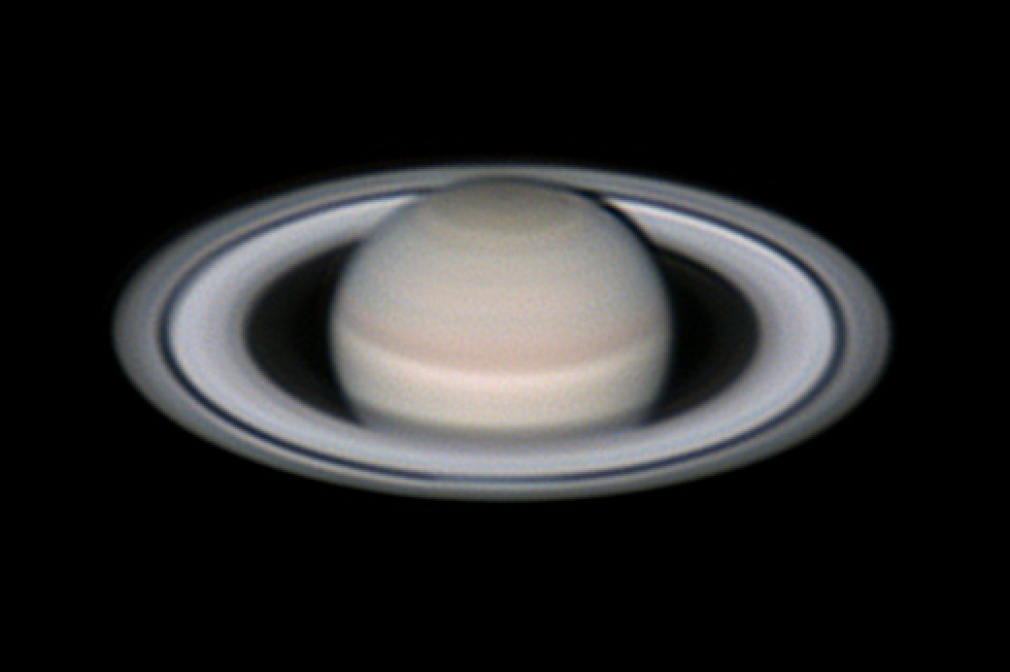Saturn's rings can be observed even with a relatively small telescope with 2" aperture. How better is the picture you can get with a telescope 5 times as large, and a camera developed for planetary imaging?
Like all flavours of astrophotography, planetary imaging has its own special difficulties, and of course its own solutions to those challenges both in technology and methodology. In deep-sky photography the most difficult part is tracking the relative motion of the sky during a long exposure without any deviation for 20-30 minutes. Another challenge is reducing the noise caused by the nature of light itself and all the imperfections of the devices we use. To be precise, it is not just reducing the noise, because many components of noise can't be reduced, but increasing the signal-to-noise ratio (SNR) on the final image.
In planetary imaging the precise tracking of the sky is not that critical because exposition times used are many magnitudes shorter than in deep-sky photography, but maximising SNR is equally important. The solution to the SNR problem is the same in both fields: increasing the total integration time by taking as many raw images of the object as possible. Since the apparent size of planets observed from Earth are very small (only a couple of times of 10 arcseconds), the distortion effect of turbulent mixing in the atmosphere is greater compared to the size of the planet and the field of view of the image. The linked video contains a 30 second cut of the original raw footage used to create the final image. It shows both the distortion caused by the atmosphere and the noise introduced by the very short exposure time in each frame.
The complete footage is 4 minutes long and contains 27500 frames. I used a special software to select the sharpest 80% of those frames, to align those frames to each other and to average the aligned images. The SNR of the resulting image is much higher than the SNR of each of the frames and contains much finer details too.
Saturn is the sixth planet in the Solar system and it has been known since the prehistoric ages because it is brighter than most of the stars in the sky thus it can easily be found by naked eye and its yellow colour can also be noticed without any aid. On the top of these, it is a planet, so its motion to the background stars are also easily noticeable. These properties make Saturn an important character in almost all mythologies.
The rings remained undiscovered though, until the invention of telescopes, because without sufficient magnification the human eye is not able to detect them. Galileo Galilei was the first human being who could (mostly) see them, when he directed his telescope on Saturn in 1610. Unfortunately the resolution of the scope was not good enough to let him identify them as rings, so he thought he saw two moons around the planet. It was Christian Huygens who first described them as ring around the planet.
Saturn is one of the giant planets in the Solar system, its orbital period is 29.5 years. Gas giants have a relatively small (compared to the size of the planet) solid core surrounded by liquid, metallic hydrogen. Above the metallic hydrogen is a layer of molecular hydrogen that gradually changes to gas state as pressure decreases by the increasing height. The upmost layer consists of gas and about 1000km thick.
In the picture this upmost layer is visible, because it is opaque in visual wavelengths. The atmosphere of Saturn is highly turbulent, just like Jupiter's, and it has similar banded structure too, although Saturn's bands are not that prominent. Even storms similar in size to the Great Red Spot on Jupiter can form in Saturn's atmosphere, however they don't last as long as the GRS.
The most prominent feature of Saturn is the ring system around the equator of the planet. It mostly consists of small particles of water ice and a small amount of dust. The rings and the gaps in them are shaped by numerous shepherd moons and moonlets. The thickness of the rings is less than 1 km, while the width of the complete ring system is above 70000 km. There are several theories about the formation of the rings, according to the two most accepted ones the rings are either formed of the remains of a moon that was torn apart by the gravity of the planet or from the leftover material after the formation of the planet itself. Unfortunately we don't know which theory is correct, but taking into consideration how infrequently I photograph the members of the Solar system, it is possible that the description of my next picture of Saturn will contain the correct one...
